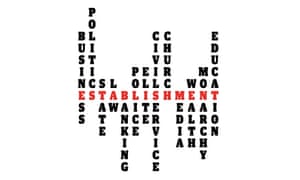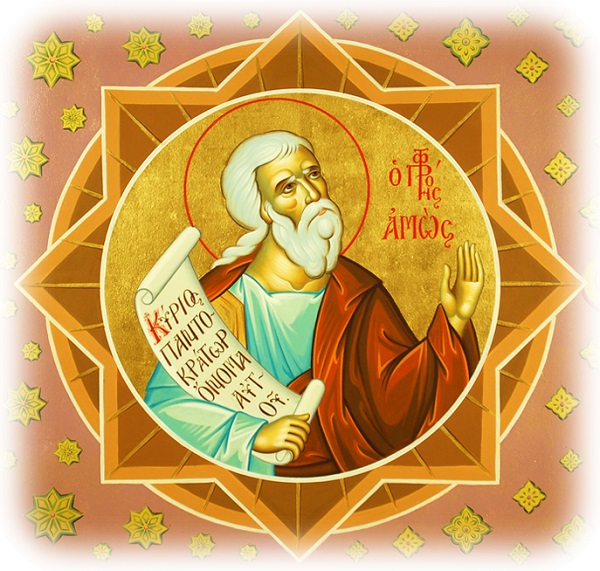
Establishment is one of those words that we often use loosely without necessarily thinking much about what it exactly means. It is a word that occurs in many different contexts of society. It may be a word describing something about politics, the business world, the legal profession or the Church. Some of the time the speaker will use the word with a tone of disapproval. It is normally possible to gauge what the user thinks of the concept by the way the word is spoken. A lighter tone can suggest approval or, at any rate, acquiescence in all that the word involves. In a political context establishment values make us think of people whose thinking is on the right in the political spectrum. In most contexts the word is used to denote a group who stand for precedent and they will value the task of preserving tradition and order. The analogy of left and right is offered as a useful shorthand for what we are trying to describe in interpreting establishment. Leftish thinking, in whatever context, will seek to challenge establishment ideas. From that perspective, establishment values will be thought to be those blocking the way to change and movement within an institution. Centrist-thinking people (like me!) will see both sides of the argument. There are times when challenge is needed but other occasions when we should value the order and stability of the past which establishment values represent and preserve.
Notions of left and right, in describing the way institutions operate, are only very rough approximations of the dynamics of organised groups. But anything that enables us to navigate a path of understanding as to the way an institution like the Church works may be helpful. Establishment conservatives in the Church will have, in common with other members of institutions, this reverence and respect for tradition and the status-quo. While it is true that there are many individual members of the Church who fall into this category of wanting at all costs to protect and preserve its values and traditions, there is also a sense in which the institution itself preserves these values. It is no exaggeration to suggest that any organisation will behave like a living being with a built-in instinct for its self-preservation. Also as a general rule, we find that the greater responsibility an individual has accepted within an organisation, the more establishment in thinking they become. They have invested their identities within the institution so that this identity is likely to reflect the values of the whole. As prominent servants of the Church, bishops and other leaders become, with few exceptions, the guardians of its establishment values and traditions.
To continue our analogy of left and right, we see how the left wing in the Church constitute those who challenge the status-quo whether for practical or theological reasons. We have no space here to examine those who challenge the Church with radical theological ideas or those who raise the topic of welcoming minorities into the worshipping life of the Church. Our concern here is the way that the body we call survivors challenges establishment values within the institution. The nature of the challenge has various elements. Survivors have some important points to make against those who occupy positions of power or leadership. The accusations against powerful individuals in the structure disturbs the smooth narrative, or should we call it mythology, which says that only individuals of the highest moral calibre become bishops and priests. If even a few individual bishops and priests fail in this way, the ‘left-wing’ challengers, here represented by the survivors, want to ask uncomfortable questions of the institution. Is there something about the culture of the Church that encourages the dysfunctional behaviour among some of it servants? Why does the Church engage in bullying and lying in order to supress the evidence of evil behaviour? We saw such things revealed in the IICSA hearings in the Peter Ball section. No establishment will find such questioning comfortable. It profoundly undermines the sense of what their institution is and how people will come to regard it both in the present and in the future.
To make life complicated there is in the Church of England more than one establishment grouping. Two at least come under the challenge and scrutiny of survivors. The first establishment finds its centre in the power structures and networks associated with St Helen’s Bishopsgate. We would claim that this network provided cover for the abuses of John Smyth and Jonathan Fletcher. A second establishment power block, not defined by theology, operates out of Church House Westminster and interlocks with the House of Bishops. Exactly how that network works, with its links with lawyers, publicity machines with access to huge financial assets, is shrouded in mystery. For decades no one has queried the work of the Church at the centre operating in secrecy and without apparent scrutiny. The reason for this tolerance of an undemocratic process at the heart of the Church was because it seemed to work smoothly. Appointments to high office were made without any scandal or suspicion of simony. The financial decisions that guard the assets of the Church Commissioners seem to operate highly efficiently. But there should always be room for challenge when it comes to any establishment, especially when they exercise their powers secretly. We have the expression ‘speaking truth to power’. Here we are talking about holding power, especially that of establishments, accountable. Yesterday (Monday) we had the extraordinary news of Bishop Stephen Cottrell openly admitting a serious safeguarding failure of ten years ago. This new openness is remarkable, especially in view of the history of cover-ups which traditionally exists at the heart of the Church. We need to see this disclosure followed up by other safeguarding concerns being addressed promptly. There are a cluster of other pending complaints to be dealt with against other serving bishops on safeguarding issues. We can hope that this new openness is the start of a new contract between the secretive establishments of the Church and their radical questioners and would-be reformers.
A further observation about establishment behaviour within the Church needs to be drawn out. Thinking of the clergy, I would not be wrong to suppose that many young clergy begin their careers inspired with a sense of the radical demands of the Christian faith. In our left-right analogy, they are firmly identified with the left. Their vocation is an invitation to live a life of service of the Kingdom. Priorities like evangelism, teaching and the service of one’s fellows after the example of Jesus, are a priority. As time goes on, the demands of the institution become more pressing, whether their local church or the denomination. The drag of that institution to make them its creatures becomes irresistible. They become more and more aware of their role as being subordinate to the institution. They come to recognise their dependency on it for their livelihood, their status and future. They become, in other words, more and more like company reps. They then start to adopt the habits, the mannerisms and the styles of what they think a clergyperson should be. Another way of saying it is to suggest that the Establishment is rather like a large magnetic force which tries to draw all into its orbit. After thirty or forty years caught up in its force field, few have that independence of thought and action that may have been there at the beginning.
It is important to point out that my own personal experience of supporting survivors over quite a number of years has made me firmly, in church political terms, left-wing. I might easily otherwise have acquiesced in the quiet life of trusting all the decisions of my leaders and ecclesiastical betters, thinking that I can rely on them to uphold and protect the Church’s reputation. But in the face of lies and cover-ups that are so often part of the experience of abuse survivors, one’s attitude is changed. Acquiescence and trust has made way for me to want to challenge and confront some of these establishment forces in the Church. Although my influence is small, the voice I possess is given a little power by the internet, support of vocal survivors and the power of Twitter etc. Small pebbles thrown into the pond of church politics can sometimes make real ripples and influence opinion. Many people of influence and power are decent people and if enough can be persuaded to see more clearly the principles and values of decency, fairness and justice, then the conservative power of sometimes dishonest structures can be broken. Am I wrong to see the honourable open behaviour of Stephen Cottrell as the possible harbinger of a new approach to the past? Five years ago all seemed to be secrecy and cover-up. Are we at a springtime of decency, openness and new beginnings, while shaking off some of the power of the establishments? There is much to do but there seems at present to be an inexorable movement in the right direction.







